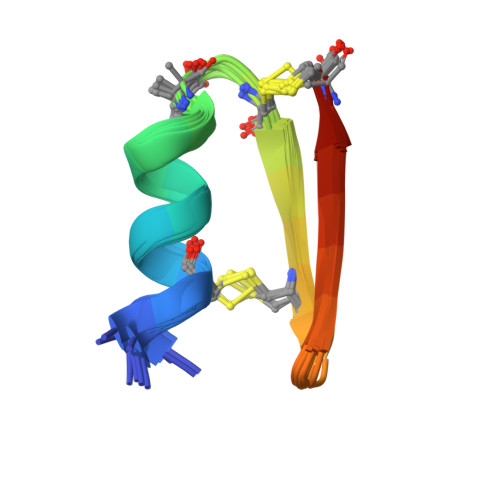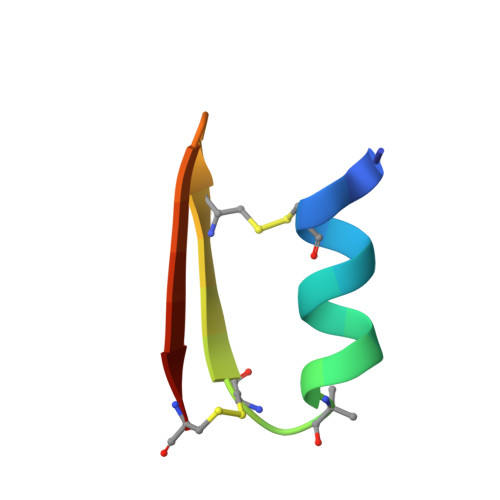Heterogeneous-Backbone Foldamer Mimics of a Computationally Designed, Disulfide-Rich Miniprotein.
Cabalteja, C.C., Mihalko, D.S., Horne, W.S.(2019) Chembiochem 20: 103-110
- PubMed: 30326175
- DOI: https://doi.org/10.1002/cbic.201800558
- Primary Citation of Related Structures:
6E5H, 6E5I, 6E5J, 6E5K - PubMed Abstract:
Disulfide-rich peptides have found widespread use in the development of bioactive agents; however, low proteolytic stability and the difficulty of exerting synthetic control over chain topology present barriers to their application in some systems. Herein, we report a method that enables the creation of artificial backbone ("foldamer") mimics of compact, disulfide-rich tertiary folds. Systematic replacement of a subset of natural α-residues with various artificial building blocks in the context of a computationally designed prototype sequence leads to "heterogeneous-backbone" variants that undergo clean oxidative folding, adopt tertiary structures indistinguishable from that of the prototype, and enjoy proteolytic protection beyond that inherent to the topologically constrained scaffold. Collectively, these results demonstrate systematic backbone substitution to be a viable method to engineer the properties of disulfide-rich sequences and expands the repertoire of protein mimicry by foldamers to an exciting new structural class.
Organizational Affiliation:
Department of Chemistry, University of Pittsburgh, 219 Parkman Avenue, Pittsburgh, PA, 15260, USA.



















